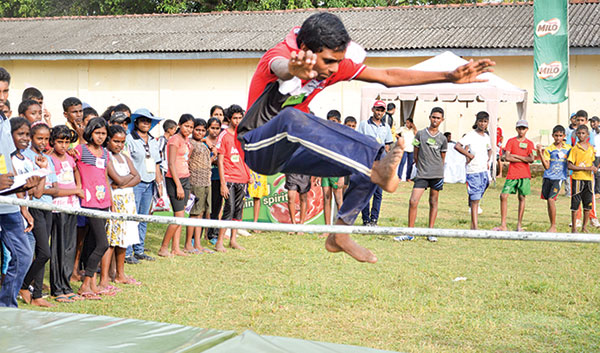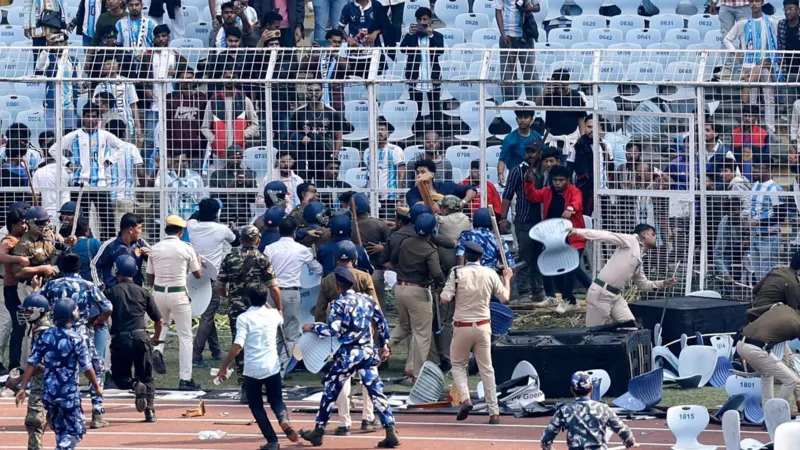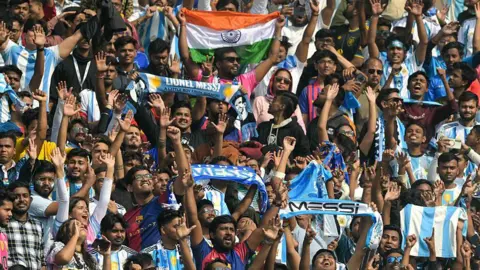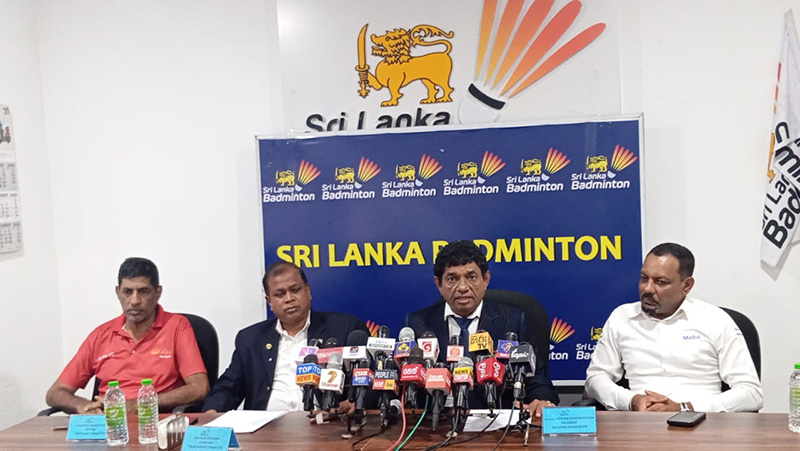Sports
An idea to improve track and field performance in schools in Sri Lanka

by Nagalingam
Ethirveerasingam. Ph.D.
Many of our school athletes have performed well at the national level. Some of them had represented the country. Carl Vayn Geyzel, when studying at Cambridge took part in the high jump in the 1928 Olympic Games representing Great Britain as Ceylon was its colony and not then a member of the IOC. Many athletes took part in the 1948 Olympic Games in London with Duncan White winning Silver Medal in the 400m hurdles. I, as a 17-year-old schoolboy, represented Ceylon at the 1952 Olympic Games in Helsinki, Finland. In the 1954 Asian Games in Manila only sprinter June de Krester and I, still a schoolboy, represented Ceylon. Though I was one of the four who established the new Asian Games high jump record I was placed fourth due to more misses.
Recommendation to improve Athletic Performance in Schools
The following recommendations, if implemented, will ensure that future athletes have a fair chance of qualifying to represent Sri Lanka and win medals in the South Asia and the Asian Games.
It is important for young athletes to take part in running and jumping events when they are in Primary Schools.
1. Dual athletic meets between schools in the same Education Zones.
The first three in each event in the Inter-House meets can represent their school to compete against each of the school in their Education Zone. Preferably every weekend or every other weekend. If a weekday is scheduled then the events should be held after school hours. It is best if the Dual meets are held before the District and Provincial meets.
The dual competitions between schools can be similar to one-day Cricket matches once a week. Unlike cricket, Athletic Dual meets can be concluded in half a day. For example, from 1:00pm to 6:00pm. All events will be finals as there will only be 6 competitors (3 from each school) for each of the 10 to 12 events. Athletic tracks marked for the School Inter-house meet can serve for all meetings during the track and field season.
In schools and universities in the USA, there are no speeches or ceremonial presentation of trophies or certificates. Sri Lanka schools can follow similar traditions. The results published by the schools’ website and in the local newspapers will serve as the record of performance and encouragement. The ceremonies after each event or at the end of the meet consume valuable time of students and teachers, spectators, and scarce resources.
Schools in a District or Education Zone can prepare schedule of Dual competitions for ages 13 to 19. At present individuals who are placed in the first three in each of the competition move on to the next level. Those who did not get placed do not get a chance to compete until the next year. Dual athletic meets will give athletes in each school eight to 10 meeting to compete thus increasing their chances of improving their performance.
2. Academic Requirement to Represent the School in Competitions
Currently there are no academic requirements in Sri Lanka for a student to represent the school in sports competitions. In all high schools in the United States student need to maintain a credit pass average to represent their school in any sports. Similar regulation exists in all universities. Such requirement ensures that the student-athlete focus on learning also. All athletes who represent the USA and compete in the Olympic Games are students or graduates of Universities, High Schools, or Community Colleges.
Sri Lanka School Sports Council needs to ensure that students who represent their school in any sports maintain a pass or credit pass average in the previous term or semester to represent their school in the subsequent term or semester. Such requirement will help student-athlete to excel in both.
I hope the National School Sports Council, the Ministry of Education and Provincial Councils will consider the proposed recommendations to improve the standard of school athletes’ academic and sports performance. Such guidance will pave the way for improving athletic performance at the national level.
Foreign News
Angry fans throw chairs and bottles at Messi event in India

Angry fans attending Lionel Messi’s tour of India ripped up seats and threw items towards the pitch after his appearance at Kolkata’s Salt Lake Stadium.
Thousands of adoring supporters had paid up to 12,000 rupees (£100; $133) to catch a glimpse of the football star, but were left disappointed when he emerged to walk around the pitch and was obscured by a large group of officials and celebrities.
When the Argentina and Inter Miami forward was whisked away early by security after around 20 minutes, elements of the crowd turned hostile.
West Bengal’s chief minister, Mamata Banerjee, said she was “deeply disturbed and shocked” by the events.
Announcing an enquiry, Banerjee apologised to Messi and “sports lovers” for the incident at the stadium.
“The enquiry committee will conduct a detailed enquiry into the incident, fix responsibility, and recommend measures to prevent such occurrences in the future,” the chief minister said on X.
A spokesperson for Messi said that he fulfilled the time commitment that had been agreed in advance. In terms of the organisation of the event itself, he referred the BBC to the apology issued by Banerjee on social media.
A police official told reporters that the event’s “chief organiser” had been arrested, without giving any further details, AFP reports.
Authorities will look into how organisers could refund money to those who bought tickets, the official added.
The All India Football Federation (AIFF) said it was not involved in the “private event”.
Messi is in India for his ‘GOAT [greatest of all time] tour’, a series of promotional events in Kolkata, Hyderabad, Mumbai and Delhi.
His tour began with the unveiling of a 70ft [21m] statue of himself in Kolkata, which had been assembled over the course of 27 days by a 45-strong crew. Messi appeared virtually due to security concerns.
Thousands of fans travelled to the city’s stadium for a chance to see the footballer in person.
They were chanting, buying jerseys and wearing “I love Messi” headbands.
Messi initially walked out at the stadium waving to fans, but after his appearance was abruptly ended on Saturday, some frustrated fans stormed the pitch and vandalised banners and tents, as others hurled plastic chairs and water bottles.
The 2022 World Cup winner – consdered one of football’s greatest ever players – had been expected to play a short exhibition game at the stadium, the AFP news agency reports.
“Only leaders and actors were surrounding Messi… Why did they call us then? We have got a ticket for 12,000 rupees, but we were not even able to see his face,” a fan at the stadium told Indian news agency ANI.
One angry fan told the Press Trust of India news agency people had paid the equivalent of a month’s salary to see the eight-time Ballon d’Or winner.
“I paid Rs 5,000 for the ticket and came with my son to watch Messi, not politicians,” they said.
“The police and military personnel were taking selfies, and the management is to blame.”
Messi was accompanied on his brief visit by his Inter Miami teammate and Uruguay star Luis Suarez, and Argentina’s Rodrigo de Paul.
Bollywood actor Shah Rukh Khan also met Messi earlier in the day, according to the Reuters news agency.


Kolkata is the capital of the Indian state of West Bengal and has a large football fanbase in an otherwise cricket-crazed country.
In the city, it is common to see hundreds of thousands of fans gather at stadiums at a derby of local clubs.
In the early hours of Saturday, thousands lined the roads and congregated outside the hotel where Messi was staying to try and catch a glimpse of him.
Hitesh, a 24-year-old corporate lawyer, flew nearly 1,900 kilometres from the south Indian city of Bengaluru.
“For me it’s personal. You can see I am quite short, and I love to play football with my friends,” Hitesh told the BBC, standing in front of the statue.
“Messi is the player I related with the most, no one can match his talent. He gives me hope that with talent you can do anything.”
[BBC]
Sports
Arrogance was England’s undoing at The Ashes

The Ashes in Australia in recent times has been a one-way street, with England repeatedly finding themselves on the wrong side of the traffic. In 2007 they were steamrollered 5-0; in 2014 another whitewash followed. The last two tours, in 2018 and 2022, ended 4-0. This time around, too, England appear to be staring down the barrel unless someone conjures up an Ian Botham-esque rescue act. In 1981, in what came to be known as Botham’s Ashes, England were teetering on the brink before their most charismatic cricketer turned the series on its head.
Ironically, this was England’s best shot at winning an Ashes series in Australia for decades. On paper, they had ticked most of the boxes. They had unearthed a couple of fast bowlers capable of matching Australia’s pace, boasted a fit all-rounder and inspirational leader in Ben Stokes and arrived brimming with confidence. Then, almost inexplicably, they pressed the self-destruct button from day one. By unleashing Bazball — a high-octane, take the game by the scruff of the neck approach that thumbed its nose at tradition — England challenged the game’s old order. The problem was, it backfired spectacularly. Heading into the third Test in Adelaide, there is a real danger that the Boxing Day Test in Melbourne and the New Year Test in Sydney will be reduced to dead rubbers.
Bazball had worked, no question about that — but largely against soft opposition. Pathum Nissanka’s sublime hundred at The Oval last year, which powered Sri Lanka to a rare Test win in England, was a case in point. England had made life easier for the visitors. In seaming conditions, when the ball was jagging around corners, their batting resembled a drunken sailor hitting the streets — all bravado, little judgment.
There was, undeniably, an air of arrogance about England’s approach. And as the old adage goes, pride comes before a fall and this has been a mighty tumble.
England had their moments in the first Test in Perth. They were ahead of the game going into the lunch break on day two. Test cricket in Perth nowadays is no longer played at the old WACA, that cauldron of pace and bounce. The Optus Stadium is an architectural marvel, bristling with state-of-the-art facilities, but it remains a notoriously tough place to bat in the opening days. England chose to ignore that reality. Convinced their aggressive methods could trump history and conditions, they believed they could bludgeon their way out of trouble. It was a grave miscalculation.
Lahiru Kumara, Sri Lanka’s fast bowler, summed it up neatly last year in England when, after dismissing a free-wheeling batter in seaming conditions, he asked: “Do you think this is T20 cricket?” That question has echoed loudly in Australia. What might work on England’s smaller grounds is a recipe for disaster on Australia’s vast expanses, where mistimed shots die in the deep and bowlers are rewarded for patience. How England failed to grasp such a basic truth defies comprehension.
England’s defiance of common sense extended beyond tactics. Take the case of Jamie Smith. He represents Surrey in First Class cricket but does not keep wickets for them; that job is handled by the reliable Ben Foakes, while Smith plays as a specialist batter. Yet at Test level, Smith is deemed good enough to don the gloves for England. It is the sort of bold call that may pass muster against fragile opposition, but against a hardened Australian side it left England exposed.
After the humiliation in Australia four years ago, heads rolled in England. There is a sense of déjà vu about this tour, with history threatening to repeat itself. England arrived believing they could change the script with bravado alone. Instead, they have been hoist by their own petard — undone not by lack of talent, but by an arrogance that refused to play the situation.
by Rex Clementine
Sports
Viren and Ranithma to defend titles at 73rd National Badminton Championship 2025

Star shuttlers Viren Nettasinghe and Ranithma Liyanage will be in action among over 1500 competitors lined up for the 73rd National Badminton Championship 2025 set to take place from December 17th to 23rd at the S. Thomas’ College Indoor Sports Complex in Mount Lavinia.
Organised and conducted by Sri Lanka Badminton (SLB), the country’s main domestic badminton event will take place at Mount Lavinia for seven consecutive days, with an expected high participation of top ranked and leading shuttlers of the country, who will compete in different categories.
The SLB officials stated that they are currently overwhelmed by the extraordinary enthusiasm among local shuttlers as the number of entries this year exceeded last year’s total count of 1254, a clear progress from 2023 edition’s tally of 1140. This year, the count has improved beyond the tally of the previous editions to 1525 entries as confirmed, which substantiates the gradual progress of the shuttle sport as a result of continuous development programmes conducted by SLB over the recent years.
The final and official number of entries will be determined by SLB officials following the main draw, which will take place on December 14th at the SLB Headquarters at No.28, Maitland Place, Colombo 7. The main draw seeding will be determined based on SLB Ranking as of December 12th, and the draw will be conducted on BWF tournament software, and could be viewed live on the facebook page and website of SLB.
The championships with a grand prize money of Rs.2 million, will feature a wide range of events from Under-11 to Under-19 in the Junior category and Over-30 to Over-70 in the Senior category, as well as the Combined age category of 100+, 110+ and 120+. But, the Open events comprising Men’s and Women’s Singles, Doubles and Mixed Doubles, will take centre stage at this grand annual event.
The opening ceremony will take place on December 17th, and will be followed by the preliminary rounds, leading up to the climax on December 19th with the Round of 16 and quarter-finals. The excitement will continue up to December 21st, with the highly anticipated semi-finals and additional quarter-final and selected final matches. The grand finale is set for December 23rd, where all the selected finals will be held, concluding with the Closing Ceremony to mark the culmination of the prestigious 73rd National Badminton Championship 2025.
At the 72nd National Badminton Championship 2024, Olympian Viren Nettasinghe and top seed women’s shuttler Ranithma Liyanage claimed double crowns, winning the Men’s Open Singles and Women’s Open Singles titles respectively. Viren and Ranithma paired up to complete a double crown by winning the Open Mixed Doubles title. Former national top ranked Buwaneka Goonathilake and Jason Homer emerged as the Open Men’s Doubles champions while the Open Women’s Doubles title was won by Varanjana Jayawardena and Rashmi Mudalige. The country’s elite domestic badminton event, conducted in accordance to BWF regulations, is sponsored by McFoil, Mobil, Li Ning, 3M and GAC.
-

 Features5 days ago
Features5 days agoFinally, Mahinda Yapa sets the record straight
-

 News7 days ago
News7 days agoOver 35,000 drug offenders nabbed in 36 days
-

 News6 days ago
News6 days agoCyclone Ditwah leaves Sri Lanka’s biodiversity in ruins: Top scientist warns of unseen ecological disaster
-

 News7 days ago
News7 days agoRising water level in Malwathu Oya triggers alert in Thanthirimale
-

 Features5 days ago
Features5 days agoHandunnetti and Colonial Shackles of English in Sri Lanka
-

 Business3 days ago
Business3 days agoCabinet approves establishment of two 50 MW wind power stations in Mullikulum, Mannar region
-

 Business7 days ago
Business7 days agoSri Lanka betting its tourism future on cold, hard numbers
-

 News6 days ago
News6 days agoJetstar to launch Australia’s only low-cost direct flights to Sri Lanka, with fares from just $315^













